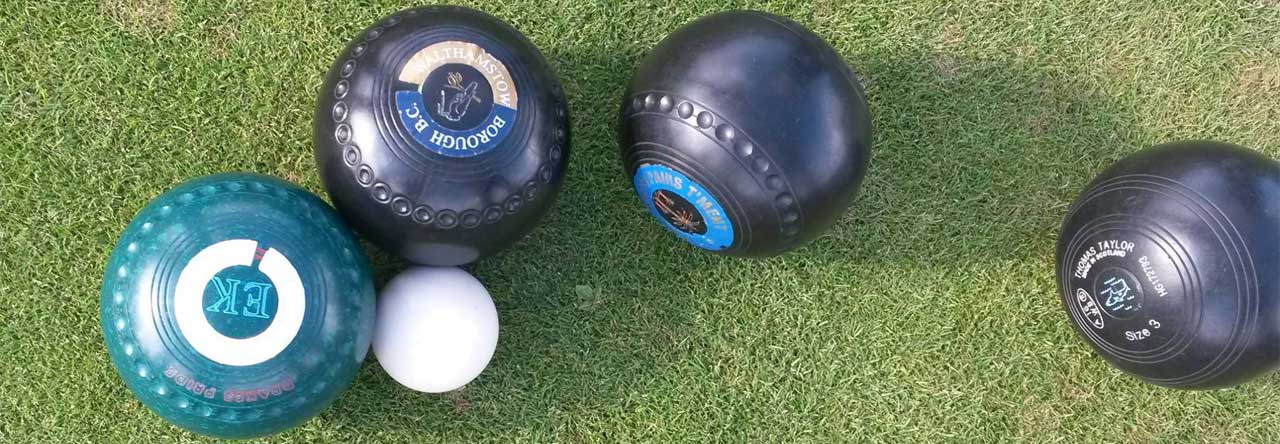Bowls has some unique terminology that might sound strange to begin with but in context will generally make sense:
- Singles: one bowler on each team, usually bowling four woods
- Pairs: two bowlers on each team, usually bowling four woods
- Triples: three bowlers on each team, usually bowling three woods
- Fours: four bowlers on each team, usually bowling two woods. This is sometimes referred to as “full rinks“
- The head: this is the area around the jack which, if all goes well, will be occupied by bowls from both sides
- An end: one round of play, where everyone delivers all their bowls, is an end. A match will often be a fixed number of ends e.g. eighteen ends in most triples matches
- The lead: the player who plays first for a team, and will deliver the jack if their team has the mat
- Second: in a triples or fours match, the player who plays after the lead. In triples they will also be the one to communicate with the skip about shot choice and to agree the score for each end with the opposition second. In games without umpires one or other of the seconds will be called upon to measure if the score of an end is in doubt.
- Third: in a fours match, the player who plays fourth, and who will be responsible for discussing tactics with the skip and to agree the score for each end with the opposition second. In games without umpires one or other of the seconds will be called upon to measure if the score of an end is in doubt.
- Skip: the last player to play in any team competition. The skip is the boss and if you’re asked to try to play a particular type of shot you should give it your best if at all possible.
- The mat: the rubber mat that bowls are delivered from. “Having the mat” means being the team that chooses where to place it at the start of an end and for delivering the jack.
- Green: the entire area of the bowling green
- Rink: the long narrow strip containing the playing area of a match. A green will generally have multiple rinks, usually at least four but often many more.
- Ditch: the shallow trough surrounding the green, designed to catch any woods (or the jack) that go over the edge. Bowls that fall into the ditch are usually removed from play for the end and won’t count for scoring (unless a toucher: see below).
- Shot/shot wood: the bowl that is currently closest to the jack
- Second wood: the bowl currently second closest to the jack. (You may also want to know third wood, fourth wood etc.)
- Toucher: a bowl that has touched the jack in the course of is play i.e. not having been knocked onto the jack by a subsequent bowl. A toucher can end up a long way from the jack, but as long as it touched even a glancing blow on the shot that it was delivered it’s still a toucher. Touchers are usually marked with a spot of chalk (either from a stick or spray) for identification. A toucher which goes into the ditch at the end of the rink is still “in play”, and therefore can score if it’s one of the closets to the jack.
- Out of play: a bowl that is entirely outside the side bounds of the rink is out of play and is removed from the end, regardless of whether it’s a toucher or not. If a bowl has any part of it, no matter how small, in line with the side markers it remains in play.
- Draw: a shot to try to land as close to the jack as possible. Most shots are draw shots.
- Weighted: playing to go past the jack, but usually hoping to collide with another wood or the jack to get a favourable results.
- Firing: a fast running wood intended to strike the head at speed to try to substantially change the game situation. Most often a skip will be the only player to fire, and usually only when the team is in a spot of trouble.
